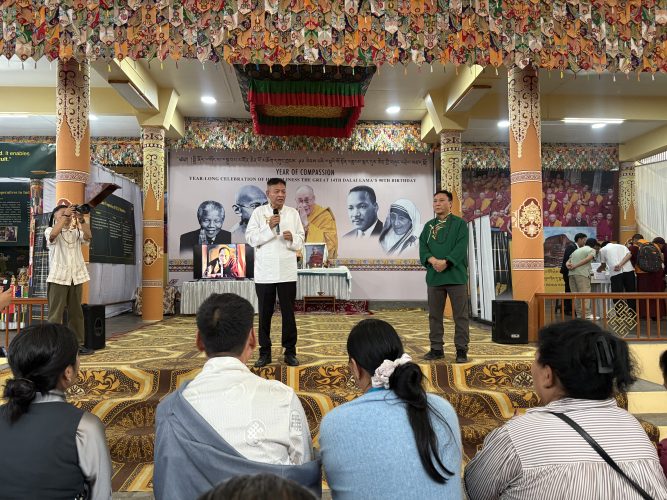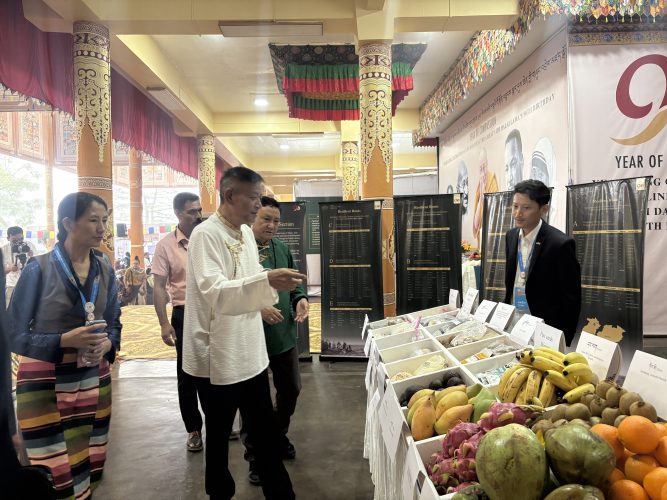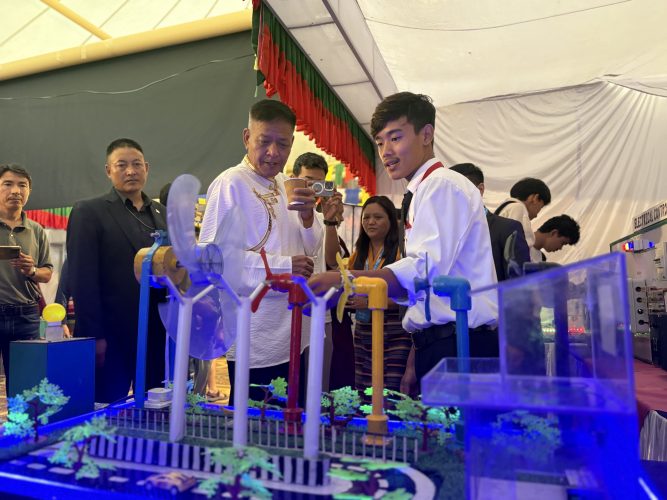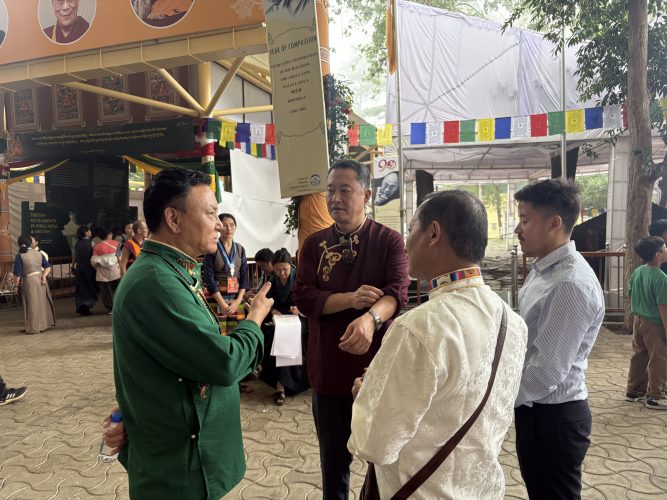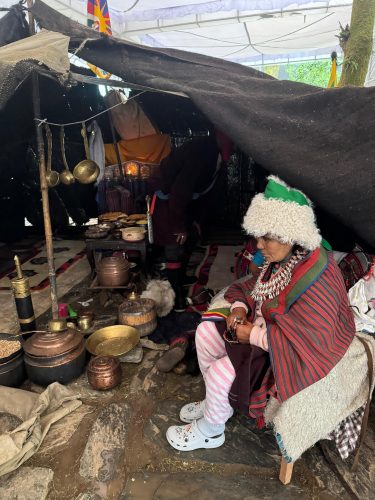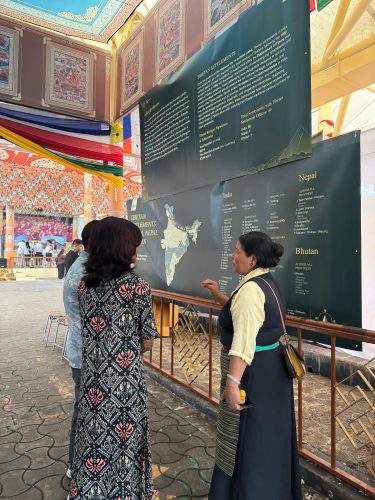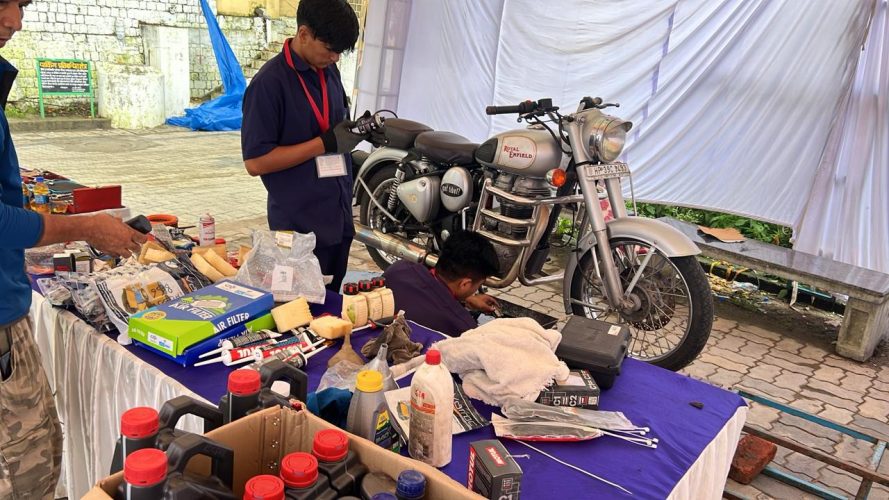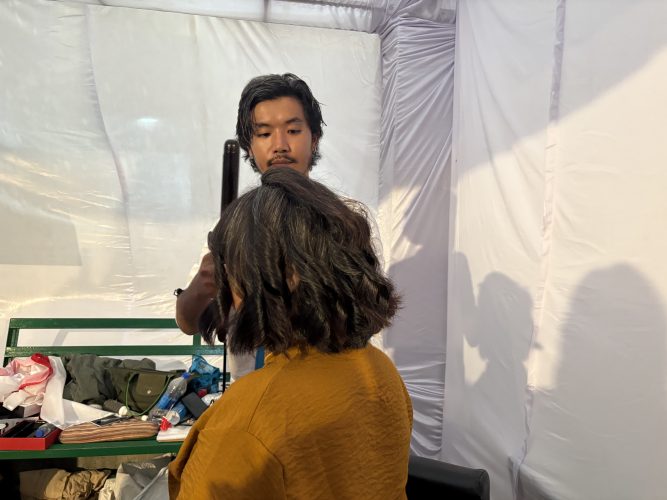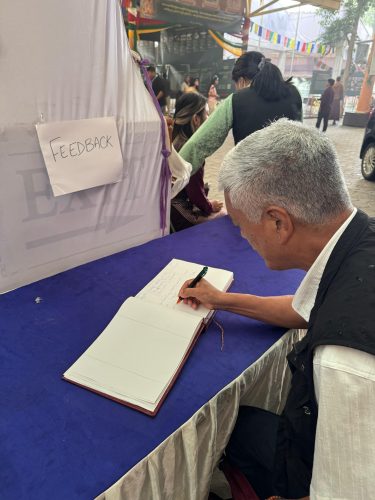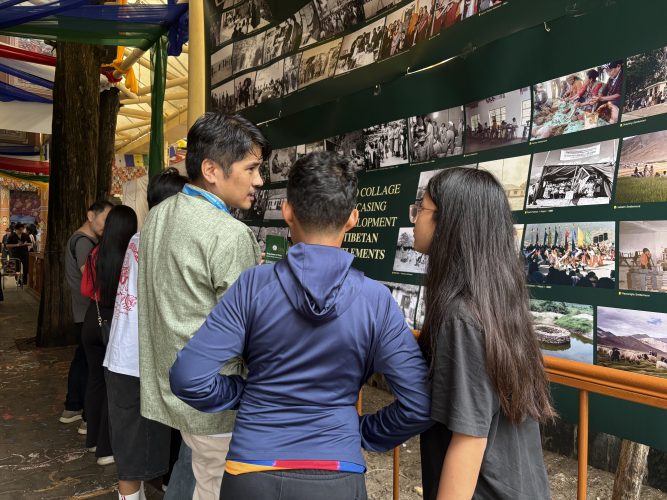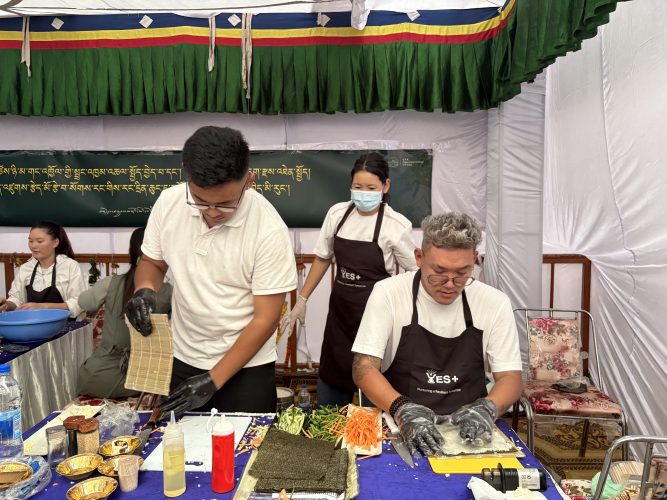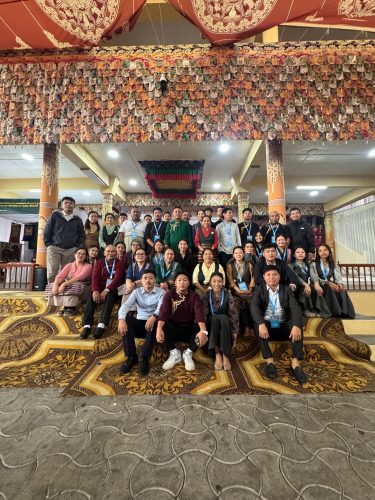Dharamshala: In honour of His Holiness the Great 14th Dalai Lama’s unwavering support and compassionate leadership toward the Tibetan people, the Department of Home, Central Tibetan Administration (CTA), successfully organized a special exhibition on 8 July 2025 at the courtyard of the Tibetan Temple (Tsuglagkhang), beginning at 9:00 a.m. As part of the ongoing celebration of the Ghoton (Compassionate Year), the exhibition commemorated the 90th birthday of His Holiness and highlighted the Department’s longstanding efforts to preserve and strengthen Tibetan settlements across India. A key objective of the exhibition was to showcase how His Holiness has compassionately guided and supported the Tibetan community in exile, especially through the establishment and sustenance of Tibetan settlements.
The event was graced by Honorable Sikyong Penpa Tsering as the chief guest. He was warmly received by Secretary Mr. Palden Dhondup and Additional Secretaries Tashi Deckyi and Tsering Youdon of the Department of Home, who formally welcomed all guests and attendees.
In his keynote speech, Sikyong Penpa Tsering praised the Department for its tireless dedication toward the welfare of the Tibetan diaspora. He emphasized the broader goals of the three-day Ghoton initiative (7–9 July), which includes exhibitions and activities by various departments to highlight the values and lifelong commitments of His Holiness the Dalai Lama. He further underlined the significance of the Ghoton Year (6 July 2025 – 6 July 2026), declared the “Year of Compassion,” calling on Tibetans to reflect more deeply on His Holiness’s four commitments and actively share his message of compassion, peace, and universal responsibility with the wider world.
The Department of Home’s exhibition featured archival photographs, developmental records, and multimedia presentations documenting the history and progress of Tibetan settlements. It served to both inform the public and preserve the historical narrative of the Tibetan exile community
